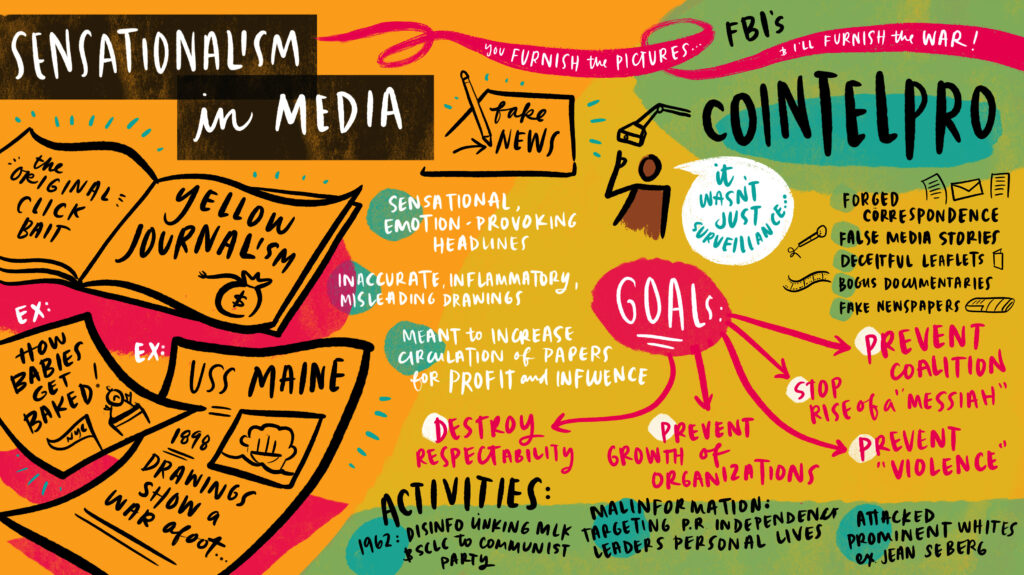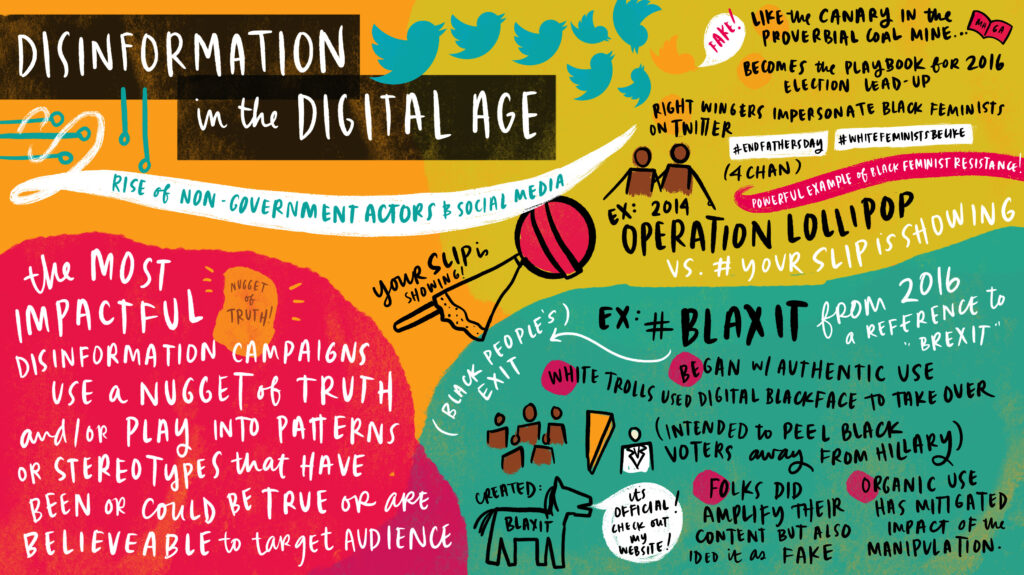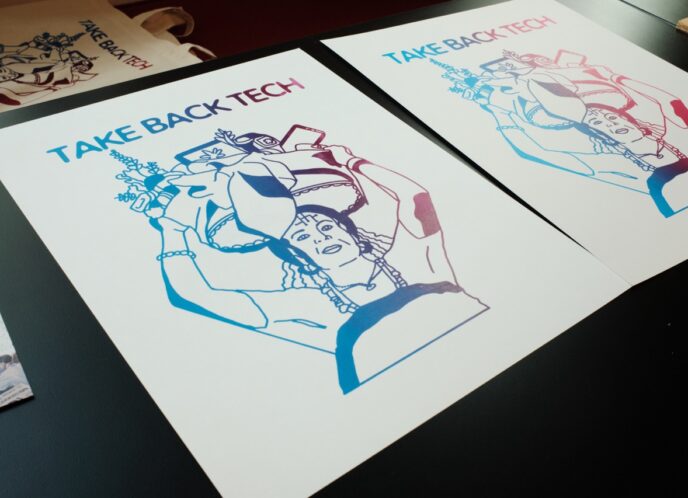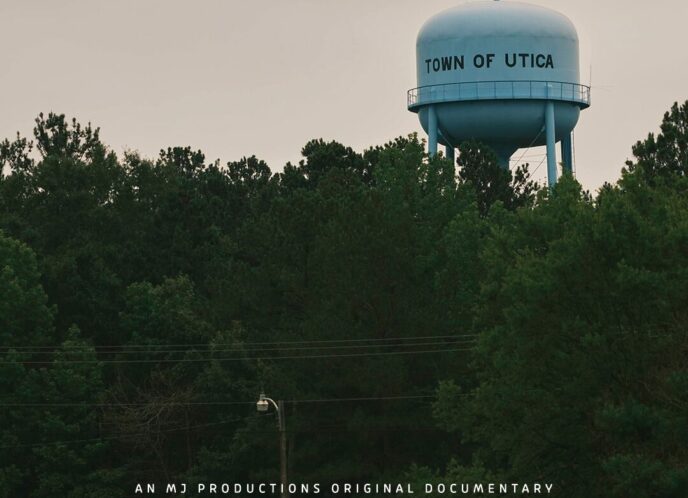
Earlier this month, in the aftermath of a decisive yet contested election, MediaJustice, in partnership with MediaJustice Network member WITNESS, brought together nearly 30 civil society groups, researchers, journalists, and organizers to discuss the impacts visual disinformation has had on institutions and information systems. While Black and brown communities are no stranger to disinformation shared via articles, Facebook posts, or tweets, social media and general advancements in technology have opened new avenues for intentionally deceiving or misleading audiences.
Deepfakes, algorithmically generated images, and other forms of visual disinformation are increasingly being used by nefarious actors to infiltrate online spaces in attempts to manipulate opinions and dis-organize communities based online. As part of our convening, we discussed the history of sensationalized media as a foundation for the type of mis/disinformation campaigns we’ve seen today and discussed the purpose of digital blackface as a tool to confer authenticity onto disinformation campaigners. Research tells us that social media posts accompanied by video or photos are found to be more convincing, despite whether the media is wholly fabricated, manipulated, or out of context.
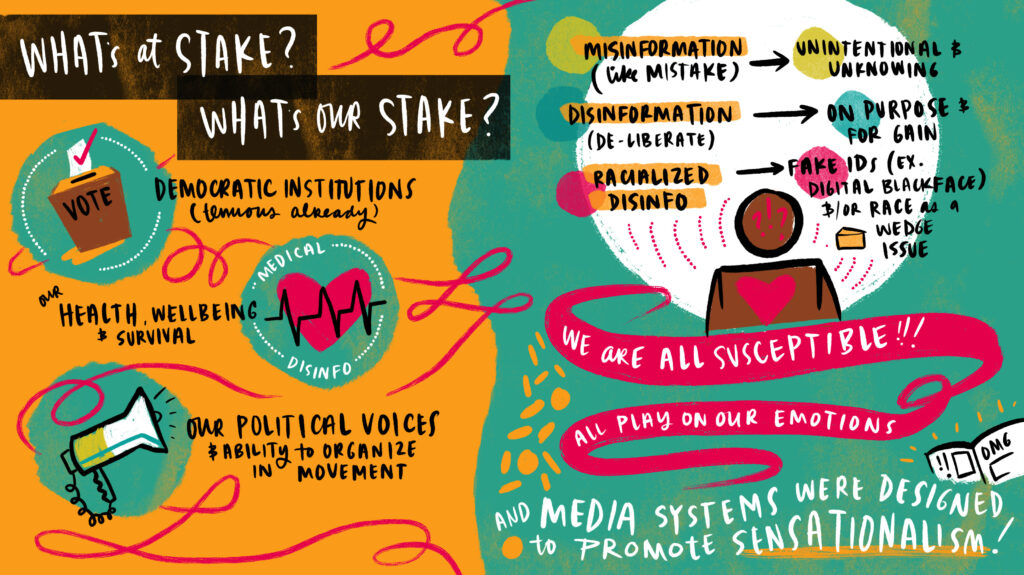
But since we didn’t want to leave our participants (or you reading this!) feeling paranoid and powerless, our co-conveners at WITNESS shared these tips and tricks for spotting deceptive media and even gave participants a hands-on experience in researching images used in sensational media.
- Anyone can be a victim of disinformation and this is especially true for visual disinformation. Disinformation is designed to provoke a visceral emotional reaction from the reader. If a piece of content is evoking an intense response from you, it is a good idea to pause and breath before sharing. We love this guide from First Draft on what to do if you think you’ve come across a piece of disinformation.
- Identify current disinfo/misinfo narratives being perpetuated in our communities. It is important to identify and investigate the underlying beliefs that allow dis/misinformation to spread in our communities. Often times, because of the long histories of abuse our communities have faced in this country, community members are more willing to believe and spread misinformation that could ultimately be harmful. We found this tip sheet from PEN America helpful on how to talk to friends and family about disinformation.
- Techniques for visual verification. This includes looking into any accounts involved, corroborating any details shared in the image or post, double checking captions, and cross referencing with other sources. Learn more about this from our partners at WITNESS.
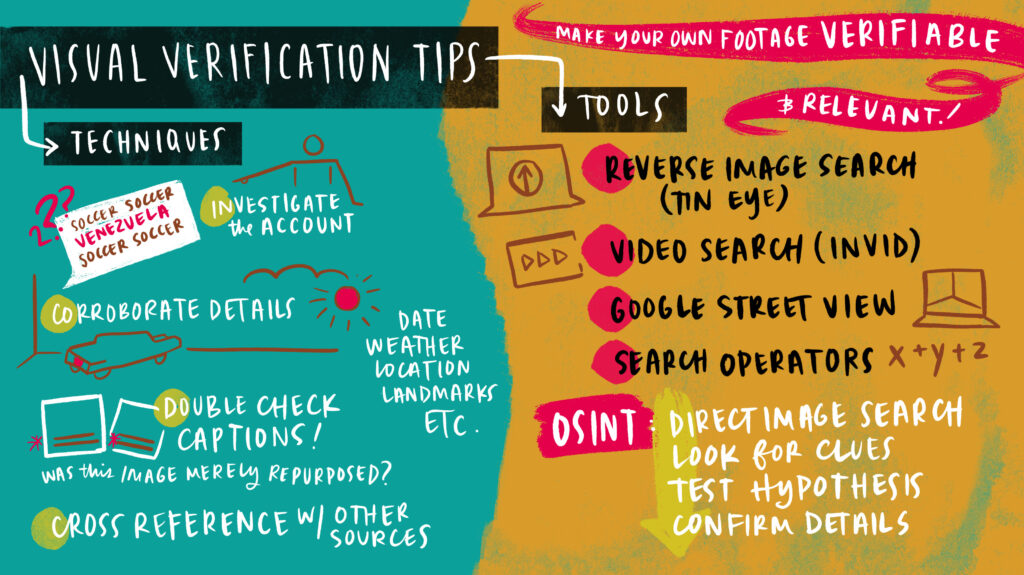
Understanding our shifting political landscape, MediaJustice is investing in training and resources for our movement allies looking to engage around issues of misinformation and disinformation. Whether it’s COVID-19 health misinformation, attempts at voter suppression, or disinformation spread to derail uprisings and protests – it’s become clear to us that our members and broader movements are looking for ways to build resilience and combat these harmful narratives. We look forward to continuing to build the knowledge, resources and expertise of our MediaJustice Network members and movement allies on these issues.
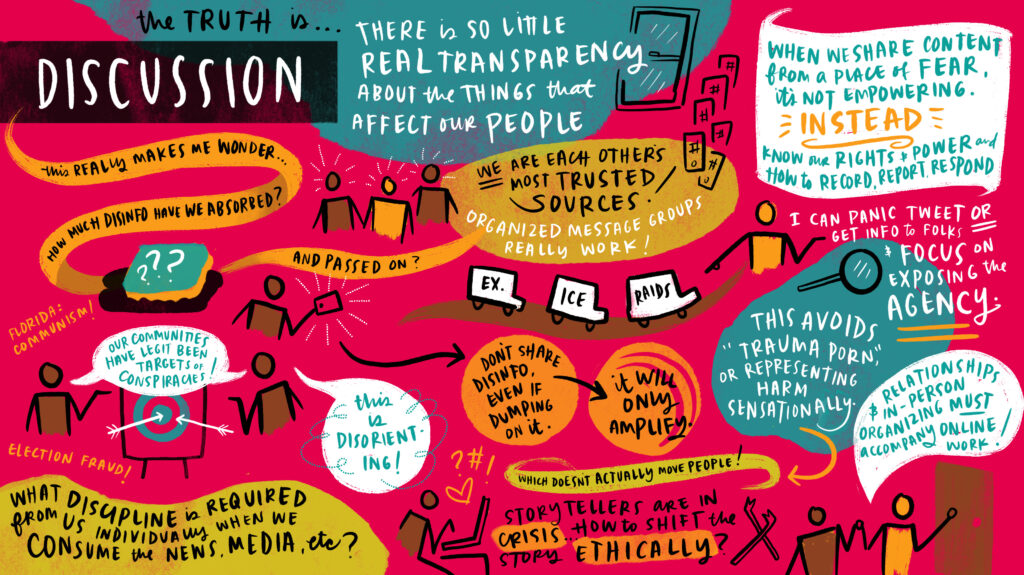
Visual notes created by Emily Simons

